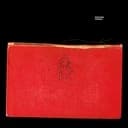Understanding the Locrian Interval Structure
The F♯ Locrian mode follows the interval pattern of H-W-W-H-W-W-W (half step, whole step, whole step, half step, whole step, whole step, whole step), producing the notes F♯-G-A-B-C-D-E. What distinguishes Locrian from all other modes is the presence of both a minor second (♭2) and a diminished fifth (♭5). The minor second creates immediate dissonance against the root, while the diminished fifth—a tritone interval—prevents the formation of a stable perfect fifth that typically anchors tonal music. This combination results in a diminished triad on the tonic (F♯-A-C), making Locrian fundamentally unstable compared to modes like Dorian or Phrygian, which maintain perfect fifths.
Why Locrian Is Rarely Used in Traditional Music
The extreme instability of the Locrian mode makes it nearly impossible to use in conventional tonal music, where establishing and maintaining a tonic is essential. The absence of a perfect fifth above the root means that the tonic chord is diminished rather than minor or major, immediately undermining any sense of resolution or home base. This inherent instability causes the ear to constantly seek resolution to other chords or tonalities, making it difficult to compose entire pieces in Locrian without the music feeling unresolved or wandering. Even in modal jazz and contemporary classical music, where experimental approaches are embraced, Locrian typically appears only briefly as a passing color or over specific diminished or half-diminished chords rather than as a sustained tonal center.
Locrian in Experimental, Jazz Fusion, and Metal
Despite its theoretical nature, adventurous composers and musicians have found creative uses for the Locrian mode in experimental and avant-garde contexts. Björk's "Army of Me" prominently features a Locrian-based riff that contributes to the song's dark, unsettling atmosphere, while Metallica's "Wherever I May Roam" uses Locrian tonality to create tension and a sense of restless wandering. Jazz fusion guitarists and pianists occasionally employ Locrian over half-diminished seventh chords (minor 7♭5) in modal improvisation, where its dissonant character adds angular, outside sounds. Progressive metal and technical death metal artists sometimes exploit Locrian's instability to create deliberately disorienting and aggressive harmonic landscapes, embracing the mode's lack of resolution as an aesthetic choice rather than a limitation.
Practice Tips for Exploring the Locrian Mode
When practicing F♯ Locrian, focus on embracing rather than resolving its inherent tension—play over a F♯m7♭5 (half-diminished) chord to hear how the mode functions in a harmonic context, and experiment with phrases that highlight the characteristic ♭2 and ♭5 intervals. Start by improvising short melodic fragments that emphasize these dissonant intervals, then practice resolving them to more stable modes like G Phrygian or F♯ Aeolian to understand how Locrian creates and releases tension. Try composing short ostinato patterns or bass lines in F♯ Locrian and layering other harmonic elements on top to explore its potential for creating atmospheric, unsettling soundscapes. Remember that Locrian works best as a color or transitional device rather than a stable tonal foundation, so practice using it to add dark, mysterious qualities to your compositions before resolving to more stable harmonic areas.





